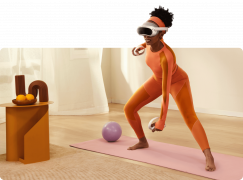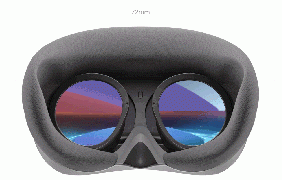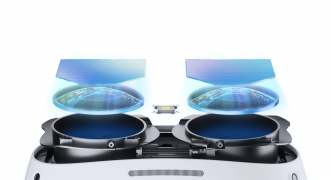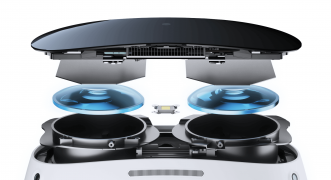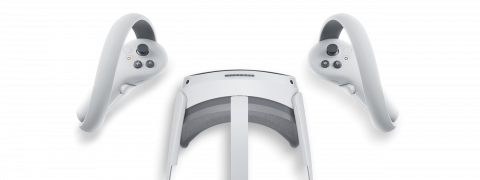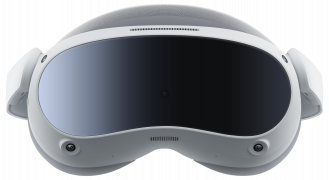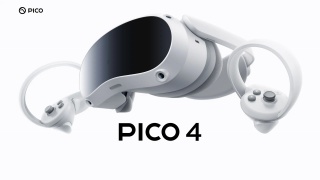Pico 4
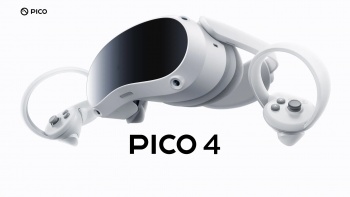
| |
|---|---|
| Manufacturer | Pico |
| Predecessor | Pico 3 |
| Successor | Pico 5 |
| Operating System | Pico OS 5.0 (Android) |
| CPU | Octa-core Kryo 585 (1 x 2.84 GHz, 3 x 2.42 GHz, 4 x 1.8 GHz) |
| GPU | Adreno 650 |
| Display | 2 x LCD |
| Resolution | 2160x2160 per-eye |
| Refresh Rate | 90 Hz |
| Image | |
| Horizontal FoV | 104° |
| Visible FoV | 104° (horizontal), 103° (vertical) |
| Rendered FoV | 104° (horizontal), 104° (vertical), 122.16° (diagonal) |
| Binocular Overlap | 104° |
| Average Pixel Density | 20.76 PPD (horizontal), 20.76 PPD (vertical) |
| Peak Pixel Density | 20.76 PPD |
| Foveated Rendering | No |
| Optics | |
| Optics | Pancake lenses |
| Ocularity | Binocular |
| IPD Range | 62-72 mm |
| Adjustable Diopter | No |
| Passthrough | 16MP RGB camera |
| Tracking | 6 DoF Inside-out |
| Base Stations | No |
| Eye Tracking | No |
| Face Tracking | No |
| Hand Tracking | Yes |
| Body Tracking | No |
| Audio | Integrated stereo speakers |
| Microphone | Yes |
| 3.5mm Audio Jack | No |
| Ports | USB Type-C |
| Wired Video | USB Type-C |
| Wireless Video | WiFi streaming |
| WiFi | WiFi 6 802.11 a/b/g/n/ac/ax |
| Bluetooth | Bluetooth 5.1 |
| Battery Capacity | 5300 mAh |
| Battery Life | 3 hours |
| Material | Plastic, foam facial interface |
| Headstrap | Hard padded retractable strap |
| Haptics | No |
| Color | White / grey |
| Input | 2 x Pico 4 Controller |
The Pico 4 is a virtual reality headset developed by Pico Interactive, a company under ByteDance, the creator of TikTok. It positions itself as a direct competitor to the Meta Quest 2, offering a range of features and specifications aimed at enhancing the virtual reality experience. The headset has garnered attention for its innovative design, visual capabilities, and unique features, as well as for certain limitations and concerns.
Contents
Overview
The Pico 4 VR headset distinguishes itself with a slimmer and lighter visor compared to many of its contemporaries. This design choice not only impacts the aesthetic appeal of the device but also contributes significantly to user comfort during extended use. The device features a Snapdragon XR2 Gen 1 chipset, which, while common in similar devices, presents certain performance limitations.
Design and Comfort
Physical Build
The Pico 4's design is notable for its lightweight and compact form. The visor, weighing approximately 295 grams without straps, offers a significant reduction in weight compared to similar models. The device's rigid strap, which is non-removable, integrates the battery into the rear, aiding in weight balance and overall comfort. However, this design choice limits customization options for users who might prefer third-party alternatives.
Facial Interface
Pico 4's facial interface utilizes a breathable fabric, akin to the material used in the Oculus Go, providing a gentler and more comfortable experience compared to the foam interfaces commonly found in other VR headsets.
Visual and Display Capabilities
Field of View and Lenses
One of the Pico 4's standout features is its field of view, which is both wider and taller than many of its competitors, including the Quest 2. This expanded field of view, attributed to the device's larger lens size, significantly enhances the immersive experience in VR. The headset utilizes pancake lenses, which are noted for their sharpness in both the center and periphery. However, these lenses have been reported to cause discomfort for users with narrower interpupillary distances (IPDs), potentially crushing against the nose when adjusted below 62mm.
Resolution and Color Representation
While the Pico 4 boasts a higher resolution than some of its competitors, this increase is not always noticeably perceptible in practice. The device's color representation has drawn criticism for appearing washed out and darker, a possible side effect of the pancake lenses.
Performance and Tracking
The use of the Snapdragon XR2 Gen 1 chipset in the Pico 4, while common, has led to performance issues, particularly when rendering more complex visuals. This has resulted in frame drops in some VR applications, which can be discomforting to users. The device's tracking capabilities, however, have been generally well-received, with precise controller tracking noted in fast-paced VR games.
User Interface and Setup
The Pico 4's system software bears a resemblance to that of the Quest's interface, with a familiar layout for users who have experience with Meta's VR systems. The UI is described as snappy and responsive, although it lacks some of the polished touches, such as haptic feedback on the virtual keyboard, found in other systems. Setting up the device requires inputting details via tracked controllers, a process that some users might find cumbersome.
Passthrough and Mixed Reality Features
The Pico 4 offers a full-color passthrough, a step up from the black and white passthrough seen in some other VR headsets. However, the lack of depth correctness in the passthrough view can lead to distortion and discomfort during movement, limiting its effectiveness for mixed reality applications.
Software and Content
The Pico Store, while growing, currently offers a smaller selection of native VR applications compared to stores like the Quest Store. However, the Pico 4 supports wireless and wired SteamVR streaming, allowing access to a broader range of PC VR content. The device's content library is expanding, with several popular titles already available and more expected to be added post-launch.
Images
- Error creating thumbnail: File with dimensions greater than 12.5 MP

